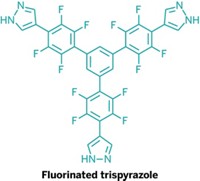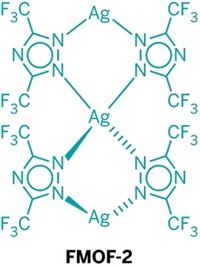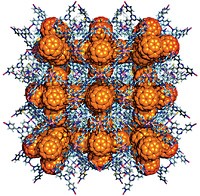Advertisement
Grab your lab coat. Let's get started
Welcome!
Welcome!
Create an account below to get 6 C&EN articles per month, receive newsletters and more - all free.
It seems this is your first time logging in online. Please enter the following information to continue.
As an ACS member you automatically get access to this site. All we need is few more details to create your reading experience.
Not you? Sign in with a different account.
Not you? Sign in with a different account.
ERROR 1
ERROR 1
ERROR 2
ERROR 2
ERROR 2
ERROR 2
ERROR 2
Password and Confirm password must match.
If you have an ACS member number, please enter it here so we can link this account to your membership. (optional)
ERROR 2
ACS values your privacy. By submitting your information, you are gaining access to C&EN and subscribing to our weekly newsletter. We use the information you provide to make your reading experience better, and we will never sell your data to third party members.
Synthesis
'Frustrated' Solid Sucks Up Gases
Discovery opens new realm of sorptive materials
by Sophie L. Rovner
November 13, 2006
| A version of this story appeared in
Volume 84, Issue 46

A familiar calixarene has revealed a hidden talent. Normally, the crystalline material is unable to absorb gases. But researchers at the University of Missouri, Columbia, showed that with a little tweaking, it can rapidly and reversibly absorb gases such as acetylene and CO2. The finding opens the possibility of using calixarenes and similar materials to separate or store gases.
The material "exhibits a new mode of gas sorption," comments professor Mike Zaworotko, who studies crystal engineering at the University of South Florida. Its behavior "should cause us to rethink the conventional wisdom concerning molecular organic solids that suggests they have little potential usage as adsorbent materials."
The crystalline solid consists of p-tert-butylcalix[5]arenes (TBC5), bowl-shaped molecules that can hold guests such as toluene. University of Missouri chemistry professor Jerry L. Atwood and colleagues found that when the solid is saturated with toluene, it's unable to absorb any gas. Nor can it hold any gas when it's completely rid of toluene, following mild heating. This procedure changes the solid's crystal structure into a "collapsed" form in which the tert-butyl groups of some calixarenes fill the bowls of others.
Atwood and his team discovered that even a few toluene molecules remaining in the crystal can "frustrate" its structural collapse, much like trapped cars holding up a freeway overpass that has partially collapsed in an earthquake. The remaining toluenes prop open the structure, leaving plenty of empty calixarene bowls that are ready to accept gas molecules (J. Am. Chem. Soc. 2006, 128, 15060).
The frustrated solid readily soaks up acetylene and can absorb CH4 or CO2 to a lesser extent, but it won't absorb O2 or N2. That selectivity means the material could be used to separate one gas from another, Atwood says.
Atwood's team has already unearthed another similar adsorbent organic solid—though it's not based on calixarenes—and expects to find several more. "We've discovered an entire lost world of sorptive materials," he declares.





Join the conversation
Contact the reporter
Submit a Letter to the Editor for publication
Engage with us on Twitter